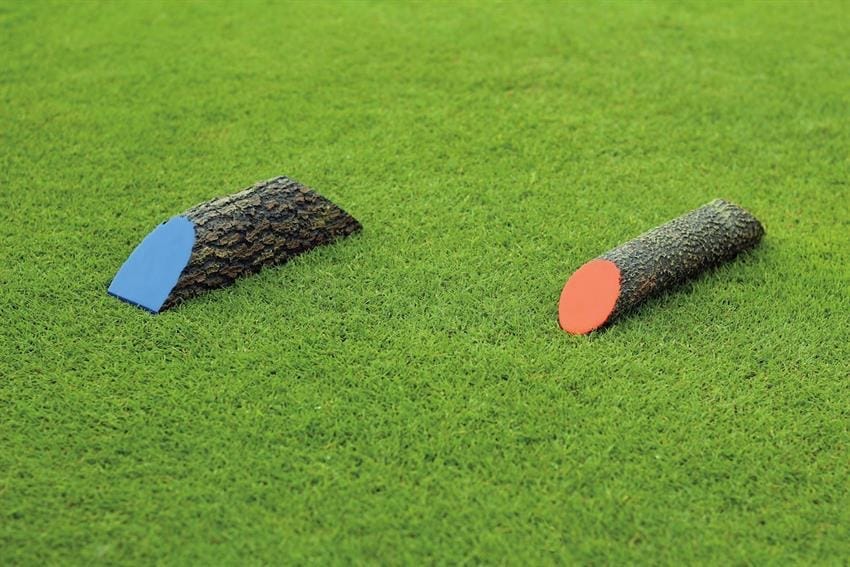First Drive - Understanding Golf Tee Colors

Understanding Golf Tee Box Colors: Tradition, Meaning, and Choosing the Right One
If you’ve ever stood on the first hole of a golf course, glanced at the different colored tee markers, and wondered what each one actually means — you’re not alone. The colors of a golf course’s tee boxes are more than just decoration; they’re part of a long-standing system designed to make the game fair, fun, and challenging for players of all abilities.
A Brief History of Tee Box Colors
The tradition of colored tee markers began in earnest in the early 20th century, as golf courses sought a consistent way to accommodate a wide range of players. Originally, most courses simply had a single set of tees — often just wooden pegs — with little thought for player ability or distance.
But as golf grew in popularity and became more inclusive, courses started adding multiple tee boxes at varying distances. The introduction of color-coded markers allowed players to select an appropriate starting point for their skill level and physical ability.
While there’s no single global authority that dictates tee colors, a fairly standardized set of conventions has emerged, especially in North America.
Common Tee Box Colors and Their Meaning
While the specifics can vary slightly from course to course (and country to country), here’s a general breakdown of what each color typically represents:
- Championship / Tournament Tees
Color: Black or Gold
These tees represent the longest possible yardage a course can offer. Reserved for professionals, scratch golfers, or club championships, these tees test every aspect of your game — length, accuracy, and strategy. Unless you’re playing at a very high level, most golfers avoid them. - Back Tees
Color: Blue
Usually intended for low-handicap, long-hitting amateurs or advanced players. On many public courses, blue tees are the longest most golfers will ever encounter in a casual round. - Middle Tees
Color: White
Traditionally, white tees have been considered the “men’s tees,” appropriate for mid-handicap players. Though golf has moved away from strictly gender-based designations, the white tees are often still the default for male amateurs. - Forward Tees
Color: Red
Historically referred to as “ladies’ tees” — though many modern players and courses prefer to call them forward tees — these are designed for beginners, juniors, seniors, and anyone who needs a shorter yardage to enjoy the game. - Family / Beginner Tees
Color: Green, Yellow, or sometimes Purple
Some courses offer these additional tees to make the game even more accessible for newcomers, children, or those seeking a relaxed round. These are usually placed well forward, helping new players develop confidence and speed up play.
International Variations
The colors and conventions aren’t entirely universal. For example, in the U.K., it’s common to find yellow tees as the main competition or “men’s” tees, while white is often used for championships and red for forward tees. In Europe and parts of Asia, course designers sometimes use entirely different palettes or even number their tees by difficulty.
The underlying principle, however, remains the same worldwide: multiple tee boxes allow players of all skill levels to compete on an even footing and enjoy the course as it was designed.
How to Choose the Right Tee Box
While ego might tempt many golfers to play from the longest tees, the best rounds — and the most fun — often come from playing a course suited to your ability.
A common rule of thumb is:
(Driver Distance) x 25 = Ideal Course Yardage.
So if your typical drive is about 200 yards, you’ll enjoy a course around 5,000 yards — likely meaning the forward or middle tees are your best bet.
Many courses also post suggested tee choices on the scorecard, sometimes based on handicap, driving distance, or age, and some are moving toward color-neutral systems that focus entirely on yardage rather than assumptions about the player.
A Game for Everyone
The evolution of tee box colors reflects golf’s broader push for inclusivity and accessibility. Whether you’re a seasoned pro or picking up a club for the first time, the tee markers help ensure the game remains challenging, fair, and fun — no matter your skill level.
So next time you step onto the first tee, give the colors a little more attention. Choosing the right set isn’t just about pride — it’s about maximizing the enjoyment of your round.
